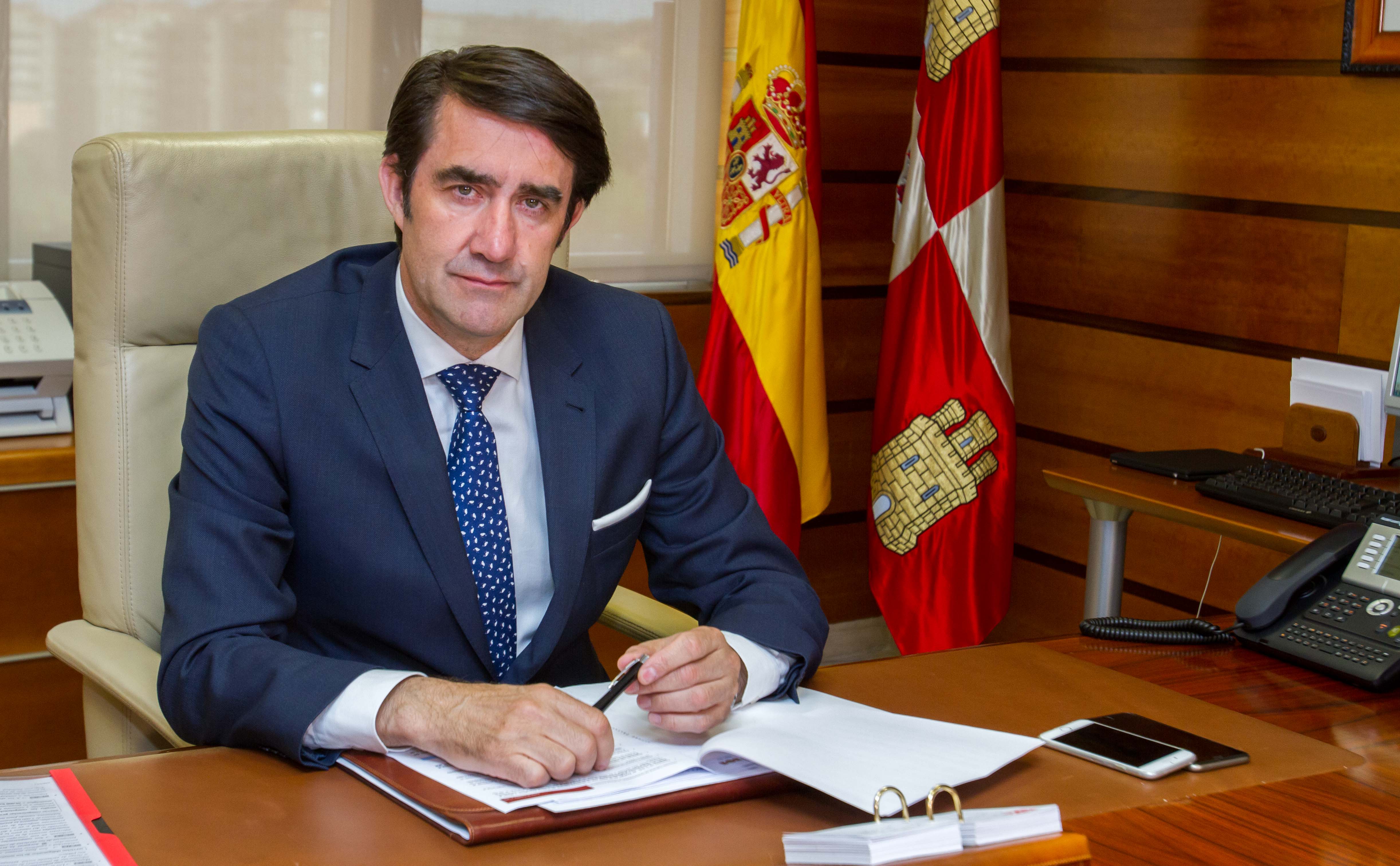Interview with Juan Carlos Suárez-Quiñones and Fernández, Minister of Development and Environment of the Junta de Castilla y León
Castilla y León becomes at this time the main center of attention of the biomass sector, on the occasion of Expobiomasa2017. What is your assessment of this event as a member of the Government of Castilla y León?
I believe that it is a sample of the results of the intense work of recent years, in which companies and the Junta de Castilla y León have bet seriously on the development of biomass in all its variants: pellets, chips, boilers, networks ...
The Junta de Castilla y León was a pioneer in implementing, from the public, initiatives in this sector of activity, in order to be a driver of private initiative. It seems that this purpose is being fulfilled.
The fair is the most obvious demonstration that a new and thriving sector is being created, which stimulates our economy and especially that of our rural areas; and that it has the full support of this Administration, as in all those initiatives that go in the line of improving the management of our forest area and in addition to giving economic activity to our rural environment, contributing to the establishment of its population and its consolidation .
What message would you like to convey to the 600 companies and brands that are participating and to the 18.000 professionals who will visit the fair during these days, as Minister of Development and Environment?
That Castilla y León is already, and aspires to consolidate even more, as a Community of reference in the sustainable use of biomass. And for this we need professionals who are involved in this sector of the future and drive it every day developing new projects.
Much progress has been made in recent years, but there is still a lot to do in technology, standardization, networks, markets ... For all this, I would like companies and professionals to see the Junta de Castilla y León as an ally that shares its objectives and concerns . And also as an investment administration, which will allocate more than 30 M € in the coming years to the execution of network projects and individual installations supplied with forest biomass.
What impact does the proper treatment of biomass have on the treatment of forests (and its consequences on fire prevention policy)?
Regarding fires, to say that it is a key issue in the entire forest policy of Castilla y León, in which any improvement in the use of forest biomass represents an advance in prevention policy. Our forests annually accumulate more than 6 millions of tons of biomass, understood as wood and its by-products (which are what we colloquially call biomass, although biomass is both board wood and what we take to pellets and wood chips to burn, which is the energy biomass). Of the byproducts, we take advantage of 700.000 tons per year in Castilla y León for the energy biomass industry. This means that we accumulate, in both public and private forests, large amounts of forest biomass that favor the development of fires.
An intense use of forest biomass is one of the best ways to improve the forestry status of our forests and, therefore, fight against forest fires.
At what percentage of participation should biomass aspire in the Community's energy mix?
I would bet for an intense development of the biomass with thermal aims, by means of networks and individual boilers; in this field there is still a great margin of growth.
Regarding the use of biomass for power generation, I think it would be desirable to support some projects, because they allow the use of the fraction of biomass of poorer quality and is an ideal complement to optimize the use, but it is essential to analyze in detail the possibilities of provisioning and security of supply.
Do you think that biomass is called to play a more important role even in Castilla y León after the decision to definitively close Garoña?
With or without Garoña open, biomass, as indicated, is important for Castilla y León as an economic resource and in the social context.
But it is clear that the necessary Reindustrialization Plan of the area affected by the Central could include some action related to the use of biomass, because in the area there is raw material and there are possibilities of evacuation.
Is it or can it be, in his opinion, the biomass sector one of the axes of policies against depopulation in Castilla y León, especially in rural areas?
As a sector with a great potential for job creation in rural areas, biomass should help fight against depopulation, especially in the forest regions of the mountainous border of the community. As I already mentioned, it is rural employment and therefore it is population fixation.
Our objective is to take advantage of one million tons of biomass in 2020, in the sense of by-products of wood for thermal and electrical use, which will create more jobs in 800 extraction, preparation and transport, jobs in the rural environment
What are the most important projects that will be addressed in the short term in this sector?
Our goal is to basically develop heat distribution networks for heating and hot water generated with biomass.
In this sense, we are building a second network in Valladolid, in Huerta del Rey, after being in production that of the University of Valladolid, which will be expanded soon with the supply to the University Clinical Hospital.
We plan to tackle a large network in the North of León, as well as in the Campus of the Universities of Salamanca and Burgos, and in the municipalities of Ponferrada, Villablino and Fabero.
Source: Expobiomasa Newspaper 2017 DL VA689-2017
